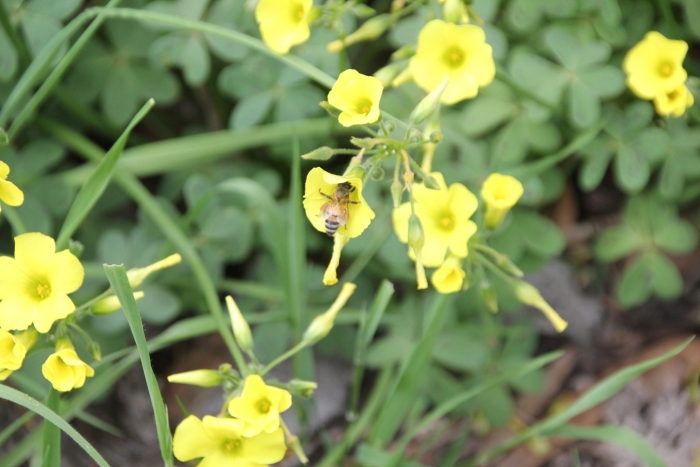African Wood-Sorrel
(Oxalis pes-caprae)
African Wood-Sorrel (Oxalis pes-caprae)
/
/

Millie Basden
CC BY 4.0
Image By:
Millie Basden
Recorded By:
Copyright:
CC BY 4.0
Copyright Notice:
Photo by: Millie Basden | License Type: CC BY 4.0 | License URL: http://creativecommons.org/licenses/by/4.0/ | Rights Holder: Millie Basden | Publisher: iNaturalist | Date Created: 2018-04-04T13:00:07-07:00 |








Estimated Native Range
Summary
Oxalis pes-caprae, commonly known as African wood-sorrel, is a perennial herb native to the Cape Province of South Africa, where it thrives in a Mediterranean climate with wet winters and dry summers. It typically forms dense mats of clover-like foliage, with each leaf composed of three heart-shaped leaflets. The plant produces bright yellow, funnel-shaped flowers from late winter to spring, which are quite showy and can create a carpet of color. It reaches a height of 4-12 inches (10-30 cm) and spreads vigorously through its underground bulbs (corms).
African wood-sorrel is often used as a ground cover in gardens due to its attractive foliage and cheerful flowers. It is also considered easy to maintain in the right conditions, requiring minimal care once established. However, it prefers well-drained soil, moderate watering, and can tolerate a range of light conditions from full sun to partial shade. In areas where it is not invasive, it can be a charming addition to rock gardens, borders, and containers. Gardeners should be cautious, as Oxalis pes-caprae can become problematic due to its aggressive growth and ability to propagate from bulbils, making it difficult to eradicate once established.CC BY-SA 4.0
African wood-sorrel is often used as a ground cover in gardens due to its attractive foliage and cheerful flowers. It is also considered easy to maintain in the right conditions, requiring minimal care once established. However, it prefers well-drained soil, moderate watering, and can tolerate a range of light conditions from full sun to partial shade. In areas where it is not invasive, it can be a charming addition to rock gardens, borders, and containers. Gardeners should be cautious, as Oxalis pes-caprae can become problematic due to its aggressive growth and ability to propagate from bulbils, making it difficult to eradicate once established.CC BY-SA 4.0
Plant Description
- Plant Type: Herb, Bulb
- Height: 0.5-1 feet
- Width: 0.5-1 feet
- Growth Rate: Rapid
- Flower Color: Yellow
- Flowering Season: Spring, Winter
- Leaf Retention: Evergreen
Growth Requirements
- Sun: Full Sun
- Water: Medium
- Drainage: Medium
Common Uses
Border Plant, Low Maintenance
Natural Habitat
Native to the Cape Province of South Africa with a Mediterranean climate
Other Names
Common Names: Bermuda Buttercup, Bermuda Sorrel, Englishweed, South African Wood-Sorrel
Scientific Names: , Oxalis pes-caprae, Acetosella abyssinica, Acetosella cernua, Acetosella ehrenbergii, Bolboxalis cernua, Bulboxalis cernua, Jonoxalis pes-caprae, Oxalis abyssinica, Oxalis biflora
GBIF Accepted Name: